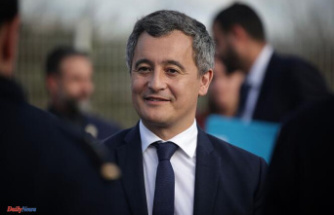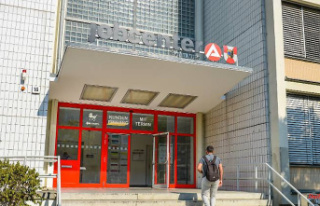In the east of Ukraine, the Russians have to set up a new line of defense in no time at all. Ukrainian partisans are trying to prevent this. In the rear of the Russian troops, they stop the advancing forces
While large areas in eastern Ukraine are reverting to Ukraine, the area gains on the southern front line are far less spectacular. This is mainly due to the fact that in the south the balance of power between the two armies is significantly worse for Ukraine. Accordingly, the Ukrainian advance around the city of Cherson is progressing relatively slowly, but Ukraine has a decisive advantage there: it already has the supply lines behind the Russian troops under control or has even cut them off completely.
The Ukrainians use the Dnieper River there, which runs through the area south of Cherson. The Russian military has to cross this wide river when it brings supplies from the south, but due to the heavy Ukrainian shelling that had begun even before the offensive, the bridges over the Dnieper are hardly sustainable. A repair would be expensive and time-consuming.
Accordingly, the Russian troops are often dependent on boats and helicopters to supply the soldiers with ammunition. Light armored vehicles reportedly drove over a bridge in Nova Karkhova, a town further east on the riverbank, according to reports Tuesday. There are no reports of movements of heavy vehicles - tanks and artillery.
The Dnieper is several kilometers wide in this region. The possibility that the Russians would have with a river of normal width to create makeshift crossings with the help of pontoon bridges does not exist there. At the same time, amphibious vehicles also get into trouble. Many Russian combat vehicles can swim, but not well, and not fast, according to military expert Gustav Gressel of the European Council on Foreign Relations. Once in the river, there is a risk that the vehicles will scatter widely in the water.
So the Dnieper poses a twofold problem for the Russian army: firstly, with supplies, which are difficult to obtain for the troops lying north of the river. In the city of Cherson in particular, they have already withdrawn to positions that are close to the bank and could therefore receive fire support from the south bank, i.e. from across the river. From Gressel's point of view, this suggests "that the troops there are slowly running out of ammunition."
This is particularly fatal for the Russians, because because they had expected the Ukrainian attack there, there are now troops there with a strength of 20,000 men. "They smuggled in their operational reserves there, as well as a lot of paratroopers, so a lot of good combat units," says Gressel.
A second problem created by the unstable bridges: Even if the Russians decide that their bridgehead in Cherson cannot be held due to the difficult logistics and give it up entirely, they would not be able to evacuate their heavy equipment from there. So you would have to accept large losses of material.
All of this plays directly into the hands of the Ukrainians. Although they are outnumbered, they are advancing slowly, but compared to the tough battles in the Kharkiv region, they only make minor losses and can play for time. Because the Russians will run out when they can no longer supply their troops and the ammunition stocks collapse.
The situation in the Kharkov region is quite different. There, in the east of the country, the Ukrainian army has the momentum on its side. She has recaptured the Kupyansk railway junction, which the Russians used to supply their troops. The liberated city of Izyum was also important for the Kremlin troops, from where further attacks on the not yet occupied regions in the Donbass were planned.
In this way, Ukraine was not only able to take over a large area from the Russian attackers, but also important logistical centers. Now it is up to them to consolidate their gains and set the stage for another attack.
Rivers also play an important role in the current fighting in the East. Heavy fighting is reported from crossings over the comparatively small Siwerskyj Donets in the Lysychansk region and especially around the town of Lyman. "The Ukraine is trying to expand bridgeheads across the river from the south," says Gressel.
In his view, the situation on the Oskil River is less clear. Currently, the front line runs directly along the river. The Ukrainian troops are on the west bank and are trying to regroup there, refuel the combat vehicles and prepare for the further advance. At the same time, the Russians are trying to establish a strong line of defense on the east bank of the river.
However, there are reports that Ukrainian troops have already crossed the river and reached the east bank. According to this, at least one developed bridgehead should already exist there. But Gressel does not see such reports confirmed at the moment. The situation in the region is also difficult to assess because many partisans are deployed behind the Russian front, i.e. further to the east.
"That's why there's always heavy fighting and places in the east of Oskil where the Ukrainian flag flies. But it's still difficult to judge whether these are already Ukrainian troops, i.e. whether a cohesive front is shifting there, or whether it is are partisan groups," says military expert Gressel. There is little information from Ukraine, "even if they certainly know exactly what's going on there." He himself does not yet see "the density of successes that would allow one to say they have the areas under control".
What is certain is that Ukrainian partisans and special forces are attempting to operate in the rear of enemy troops, ambushing, confusing and delaying the new Russian forces now pouring in there to defend the front line. The aim is to disrupt the construction of the Russian defense line and, if possible, to delay it.












